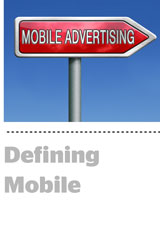 Mobile advertising is still emerging as a category but the vendor landscape is already crowded with platforms offering overlapping feature sets. As mobile ad networks, data management platforms, targeting firms and other technologies continue to pile up, drawing a clear line between these services and guarding against conflicts of interest is getting harder, according to ad agencies.
Mobile advertising is still emerging as a category but the vendor landscape is already crowded with platforms offering overlapping feature sets. As mobile ad networks, data management platforms, targeting firms and other technologies continue to pile up, drawing a clear line between these services and guarding against conflicts of interest is getting harder, according to ad agencies.
Worldwide mobile ad revenue is expected to reach $11.4 billion this year, up from $9.6 billion in 2012 and could reach $24.5 billion by 2016, according to Gartner. In North America alone, nearly half of all digital ad spending will go toward ads on tablets and smartphones by 2017, up from 18.8% this year, eMarketer forecasts.
In the race to become a “one-stop-shop” for advertisers and publishers, numerous companies offer services that arguably fill more than one category. Mobile rich media vendors Celtra and Medialets, for example, offer the ability to design ad creatives, serve and target the ads, manage the campaigns, and do campaign analytics. Many of these resemble services historically associated with agencies.
Likewise mobile ad firm Amobee serves both publishers and advertisers with design tools, media planning and buying capabilities, targeting, and tracking and reporting, among other features. The company also recently acquired RTB platform provider Gradient X. And Flurry, an app analytics provider, is building out a real-time bidding mobile exchange, Flurry Marketplace, that includes app audience data.As a result, there is growing confusion among advertisers as to whether some companies are “an agency or an inventory source,” points out M&C Saatchi Mobile’s director of mobile strategy, Gabriel Cheng. According to Cheng, advertisers should be wary of agencies that have their own inventory while also offering media planning and buying services. “I believe there should be a clear divide solely based on a potential conflict of interest when planning media,” Cheng said. “This is one reason why media agencies exist in the first place, to be agnostic to the media source and make media buying based on performance. And when the ad-serving, attribution tracking and supply-side mediation are also proprietary to the agency, advertisers may have difficulty in auditing and trusting the validity of the reported performance and data.”
Sean Muzzy, North America CEO at digital media agency Neo@Ogilvy, agrees that mobile advertising has become “increasingly blurry” with “many companies touting the same capabilities.” This trend, Muzzy continues, is “not dissimilar to what we saw in the PC world a couple a couple of years back, when networks were becoming DSP’s and then some becoming DMP’s, etc. We should expect this to continue, but it will probably happen quicker and with more of a focus on cross-device analytics and content optimization.”
Transparency of data will be a key differentiator as companies struggle to stand out from their competitors, according to Muzzy. “If we look at what continues to happen online,” Muzzy commented, “The winners are able to evolve and move away from opaque inventory models to more transparent data or content driven ones. Survival will be about staying close to consumer behavior and how it evolves with increased usage across devices.”











